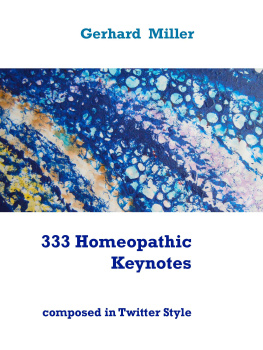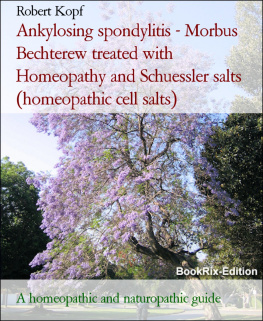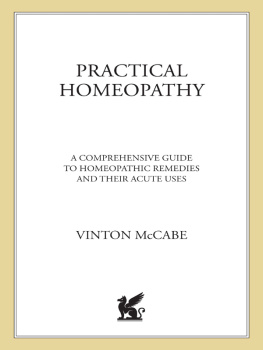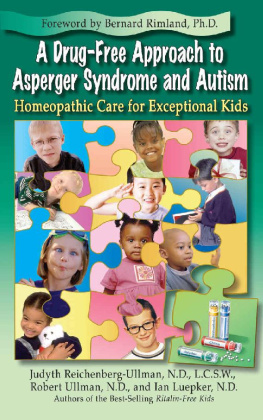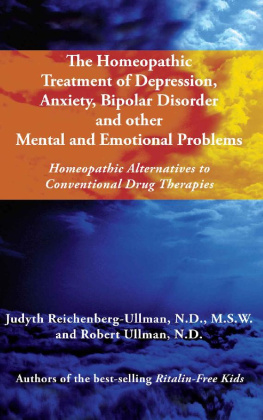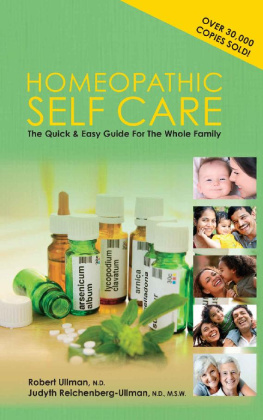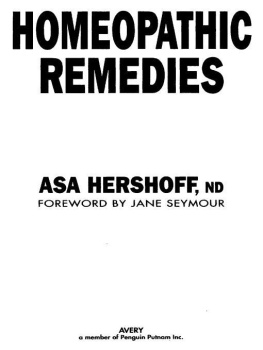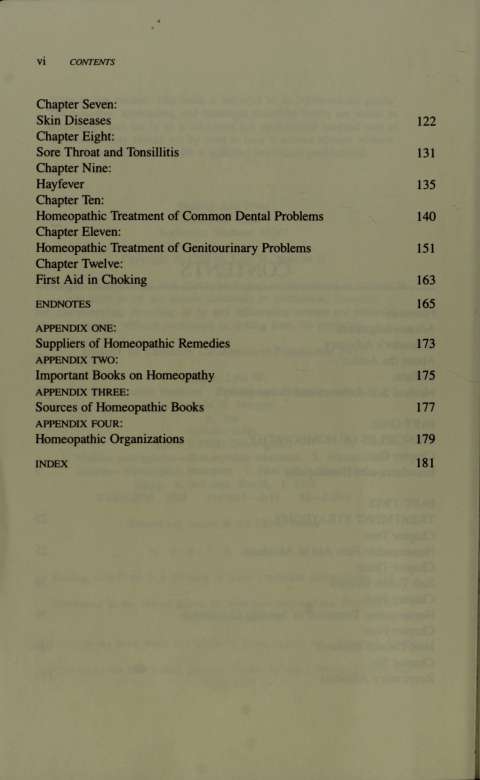This book made available by the Internet Archive.
FOREWORD
This book by Dr. Lyle Morgan should accompany a good homeopathic first-aid kita vital addition to every home, office, and outdoorsman's backpack. Backpackers cannot cany excess weight and must therefore pack only the most potentially useful objects. So it should be with every home and office. In discussing the application of homeopathy to first-aid situations, Dr. Morgan suggests treatments for both common and unusual emergencies, remedies that can elicit the quickest natural healing response when time is of the essence.
Dr. Morgan's training in homeopathic medicine is extensive, but formal education alone is not enough. Dr. Morgan has years of valuable experience to supplement his education. An excellent author, he writes with style and enthusiasm; he writes with sufficient depth and explanation to be easily understandable; and his case reports give specific examples of how to apply the principles and practice of homeopathic medicine to individual cases for the lay reader and the professional health care provider.
Pharmaceutical companies' continued existence depends on profits, and profits are highest on sales of new medications protected by patents. With time, patents on medications expire, but some drugs with expired patents do enjoy good sales and provide continuing profits for the pharmaceutical companies. Many valuable medications never reach the market owing to limited use. Others never sell because of competition in strongly established markets. It is difficult to bring out a good drug when another already holds the market.
For many medical conditions the treatments are almost as bad as the
FOREWORD
disease. For these and other reasons, it is important that on-going studies of current therapy with the "popular" as well as the alternative therapy, be performed. Homeopathic medicine is one such alternative therapy, tested over decades of time and proven successful.
Dr. Lyle Morgan provides a valuable reference text of experiences with homeopathic and naturopathic treatment for many common and uncommon conditions. Dr. Morgan's case studies are particularly instructive, giving graphic evidence of the success of the therapies. Advice given covers the more common situations likely to be encountered, and topics are explained in sufficient detail to be extrapolated to more complex cases. This book is invaluable for medical self-help and first aid, not only in the home but for the outdoors venturer and backpacker, too.
No single methodology provides cures for all conditions, and limitations concerning self-help and first aid are well stated here. Mechanisms of action are provided, and this information helps explain which therapy will likely be the most effective.
Dr. Morgan covers situations with the drama of real life. Rapid improvement with the methods presented is typical; suggestions for enhancing effectiveness are given. Explicit warnings are presented of what to do if the treatment is not rapidly effective. This book, in summary, is one that will be invaluable to anyone called on to give first aid or emergency care.
Harvey Neal Sievers, M.D., EA.A.EP. The Blair Medical Group
ACKNOWLEDGMENTS
I wish to thank everyone who has assisted me in making this book possible, in particular the following individuals:
Jack E. Craig, President, Standard Homeopathic Company, who provided encouragement through his correspondence and graciously granted permission to quote succinct materials from Homeopathic Miscellany, which I could not have written any better. Jay R Borneman, Marketing Director, Standard Homeopathic Company, for his unfailing encouragement and his reading of the final working draft. Dana Ullman, M.P.H., Director, Homeopathic Educational Services and President, Foundation for Homeopathic Education and Research, for his interest in my work. H. Neal Sievers, M.D, EA.A.ER, family practitioner and Fellow of the American Academy of Family Physicians. Neal exemplifies the truest definition of physician a humane healer. From editing the manuscript to assisting in other technical matters, Neal provided the boost necessary to complete the task of bringing the clear, sound principles of homeopathic emergency first aid and self-care to the reading public. James E Bellman, Jr., Ph.D., and Kathryn A. Bellman, J.D., Ph.D., believers in the power and efficacy of homeopathy, for their valued friendship and continued support. My father, Lyle W. Morgan, and my late mother, lone E. Morgan, for their unflagging belief that I could accomplish whatever goals I set before me, for their love and guidance, always. And certainly not least of all, Paul ("Sarge") and Carol Anglen, Kevin Sean Anglen, and Dr. Michael and Kathy Heffernan, who never let me forget to strive for my best. I love you all.
Lyle W. Morgan II, H.M.D, Ph.D.
A READER'S ADVISORY
It is not the purpose of this book to replace the professional services of a physician. The reader should not hesitate to consult a licensed physician or other licensed or certified health care practitioner for any illness or injury that requires professional treatment.
Homeopathic remedies have been used by physicians, licensed or certified health care providers, and lay people for nearly 200 years. Scientific research is now proving that homeopathic remedies have remarkable and valuable healing properties. The United States Food and Drug Administration has recognized the legal status of homeopathic medicines as listed in the Homeopathic Pharmacopoeia of the United States as approved medicines, so long as they have not been altered in their formulations or inaccurate claims made regarding their effectiveness. Most homeopathic remedies are available as nonprescription, over-the-counter drugs with the exception of some tinctures, potencies, and special combinations that can be used only by licensed physicians.
The remedy indications and tables in this book have been taken from authoritative sources: the homeopathic Materia Medica and the writings of physicians, clinicians, and researchers in scientific laboratory reports, medical documents and journals, and other related sources. No attempt should be made on the part of the reader to use any of this information as a form of treatment for any illness or injury that requires the care of a licensed or certified health care provider.
Principle Sources of Information Used for This Book:
Leaders in Homoeopathic Therapeutics, E. B. Nash, M.D. (Calcutta, India:
Sett Dey & Company), 1959.
The Prescriber, 9th ed., John Henry Clarke, M.D. (North Devon, England:
Health Science Press), 1972.
Emergency Homoeopathic First-Aid, Paul Chavanon, M.D., and Rene Le


